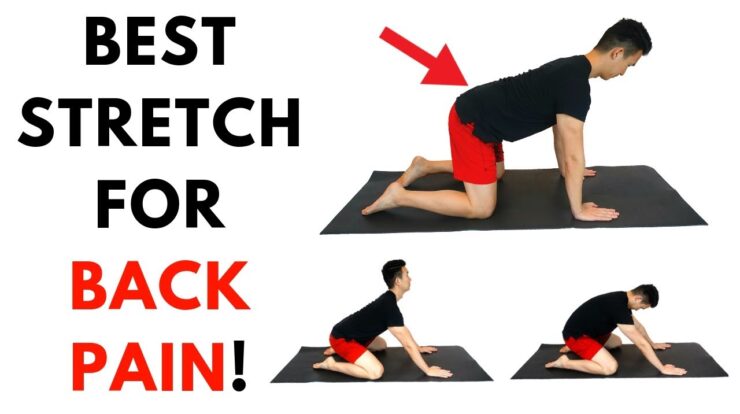
How can stiff and tight muscles result in back pain? This question delves into the intricate relationship between musculoskeletal health and chronic pain. Understanding the mechanisms behind this connection can empower individuals to take proactive measures in preventing and managing back pain.
Stiff and tight muscles, often caused by inactivity, prolonged sitting, or muscle imbalances, can have a significant impact on the back. These muscles can restrict movement, reduce flexibility, and put pressure on the spine, leading to discomfort and pain.
How Can Stiff and Tight Muscles Result in Back Pain?

Stiff and tight muscles are a common cause of back pain. They can restrict movement, reduce flexibility, and put pressure on the spine. This can lead to pain, stiffness, and discomfort.
Regular exercise is widely recognized as the most effective way to prevent flexibility issues. A study published in the journal explain why regular exercise is the best way to prevent flexibility issues. concluded that individuals who engaged in regular physical activity had significantly better flexibility than those who did not.
Exercise helps increase the range of motion in joints and muscles, reduces stiffness, and strengthens the muscles around joints.
Stiff and Tight Muscles: Definition and Causes, How can stiff and tight muscles result in back pain?
Stiff muscles are muscles that have lost their normal range of motion. This can be caused by a number of factors, including inactivity, prolonged sitting, or muscle imbalances. Tight muscles are muscles that are contracted and cannot relax. This can be caused by overuse, injury, or poor posture.
Impact of Stiff and Tight Muscles on Back Pain
The back is a complex structure that relies on the proper function of muscles, ligaments, and bones. When muscles are stiff and tight, they can restrict movement and put pressure on the spine. This can lead to pain, stiffness, and discomfort.
Wishing all mothers a happy mothers day wishes mom filled with love, laughter, and appreciation.
Specific Muscle Groups and Back Pain
There are a number of specific muscle groups that, when stiff and tight, are more likely to contribute to back pain. These include:
- Erector spinae: These muscles run along the spine and are responsible for supporting the back.
- Gluteus maximus: This muscle is located in the buttocks and is responsible for extending the hip.
- Hamstrings: These muscles run along the back of the thigh and are responsible for bending the knee.
Consequences of Untreated Muscle Stiffness and Tightness
If left untreated, stiff and tight muscles can lead to a number of problems, including:
- Worsening back pain
- Increased risk of injuries
- Reduced mobility and function
Prevention and Management Strategies
There are a number of things you can do to prevent and manage stiff and tight muscles, including:
- Regular stretching
- Proper posture
- Maintaining a healthy weight
- Exercises
- Massage techniques
- Heat/cold therapy
Final Wrap-Up: How Can Stiff And Tight Muscles Result In Back Pain?

Untreated muscle stiffness and tightness can have severe consequences, including chronic back pain, increased risk of injuries, and impaired mobility. Therefore, it is crucial to address these issues through preventive measures such as regular stretching, proper posture, and maintaining a healthy weight.
Additionally, exercises, massage techniques, and heat/cold therapy can effectively manage existing muscle stiffness and tightness, improving overall well-being and reducing the risk of back pain.
If you’re looking to reduce lower back fat, incorporating exercises that target the area into your workout routine can be beneficial. A combination of cardio and strength training exercises can help burn calories and tone the lower back muscles. Some effective exercises for lower back fat include squats, lunges, and leg raises.
By engaging in regular exercise and following a healthy diet, you can improve your overall health and fitness, including reducing lower back fat.
Questions Often Asked
What are the common causes of muscle stiffness and tightness?
Inactivity, prolonged sitting, and muscle imbalances are common causes.
How can stiff and tight muscles contribute to back pain?
For those looking to target lower back fat, a combination of cardio and strength training exercises can be effective. Cardio exercises, such as running or swimming, help burn calories and improve cardiovascular health. Strength training exercises, such as squats or lunges, help build muscle and tone the lower back area.
Refer to this guide for more exercises for lower back fat that can help shape and strengthen the lower back.
They can restrict movement, reduce flexibility, and put pressure on the spine.
Exercise is crucial for maintaining flexibility. Regular physical activity helps increase the range of motion in joints and muscles, reducing the risk of stiffness and pain. A study published in the journal explain why regular exercise is the best way to prevent flexibility issues.
found that individuals who engaged in regular exercise had significantly better flexibility than those who did not. Exercise also strengthens the muscles around joints, providing stability and support. Additionally, it improves blood circulation, which helps deliver nutrients and oxygen to muscles and joints, promoting their health and flexibility.
What are the potential consequences of untreated muscle stiffness and tightness?
Chronic back pain, increased risk of injuries, and impaired mobility.
How can I prevent muscle stiffness and tightness?
Regular stretching, proper posture, and maintaining a healthy weight are effective preventive measures.
What are some strategies for managing existing muscle stiffness and tightness?
Exercises, massage techniques, and heat/cold therapy can effectively manage these issues.





